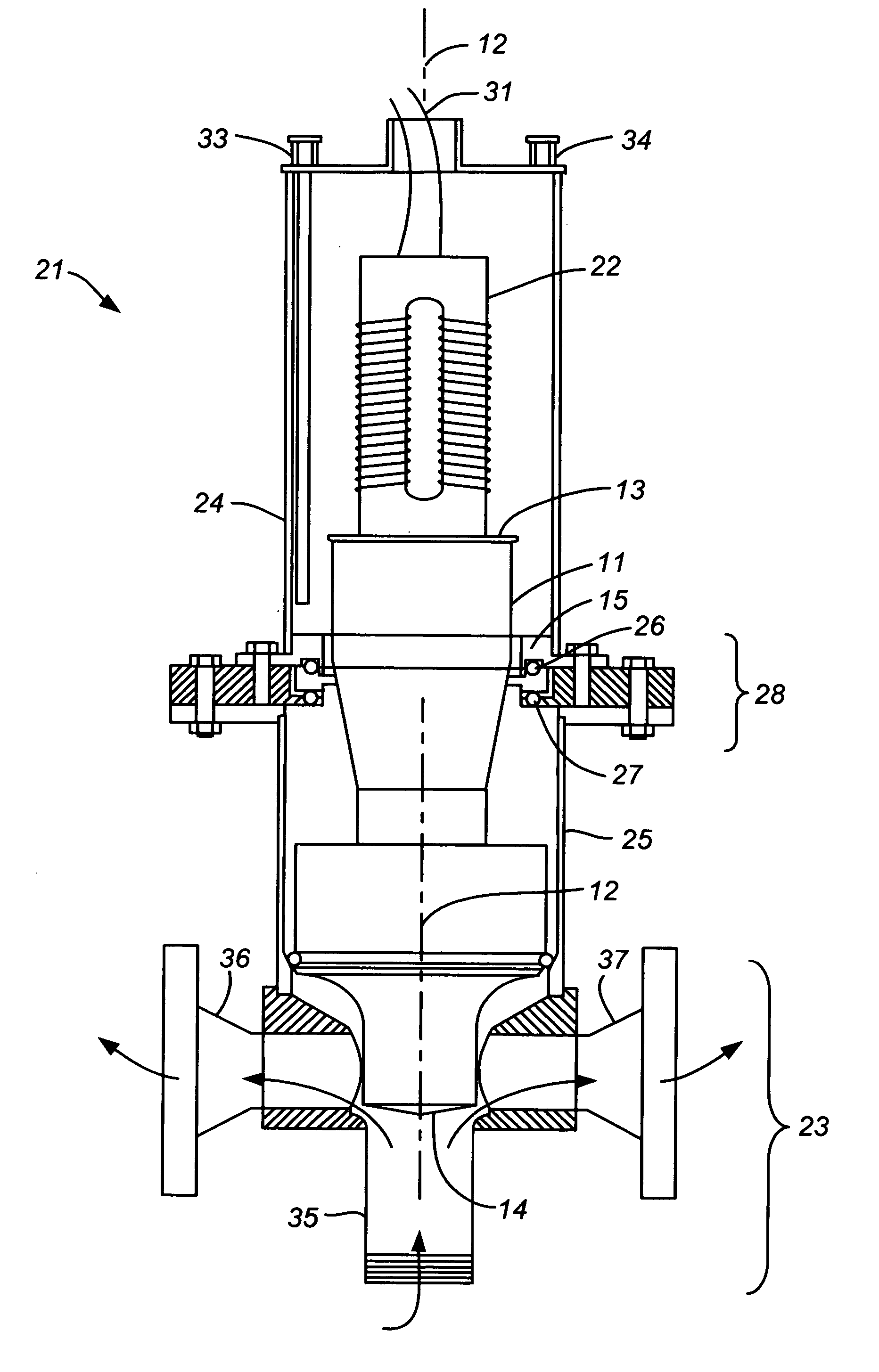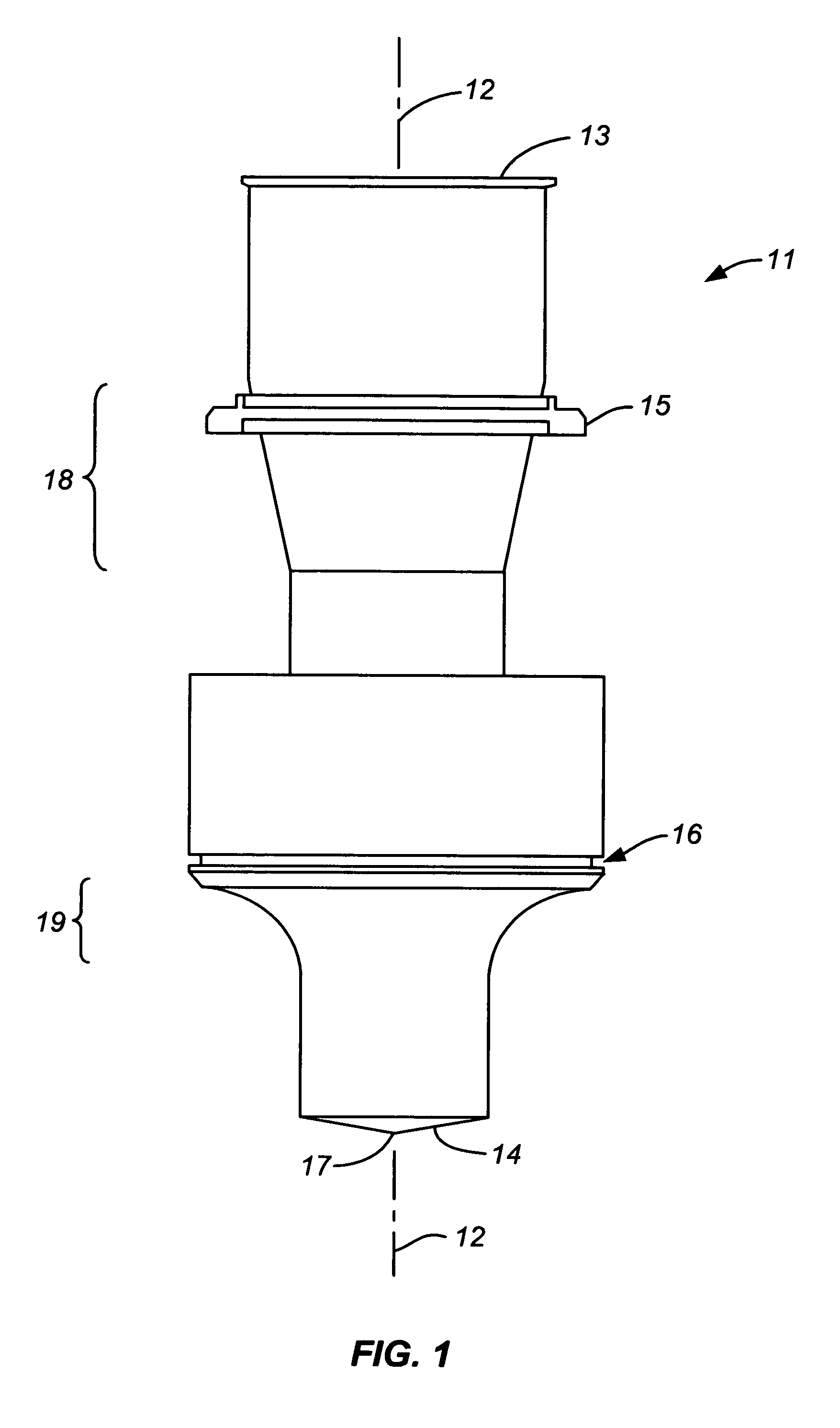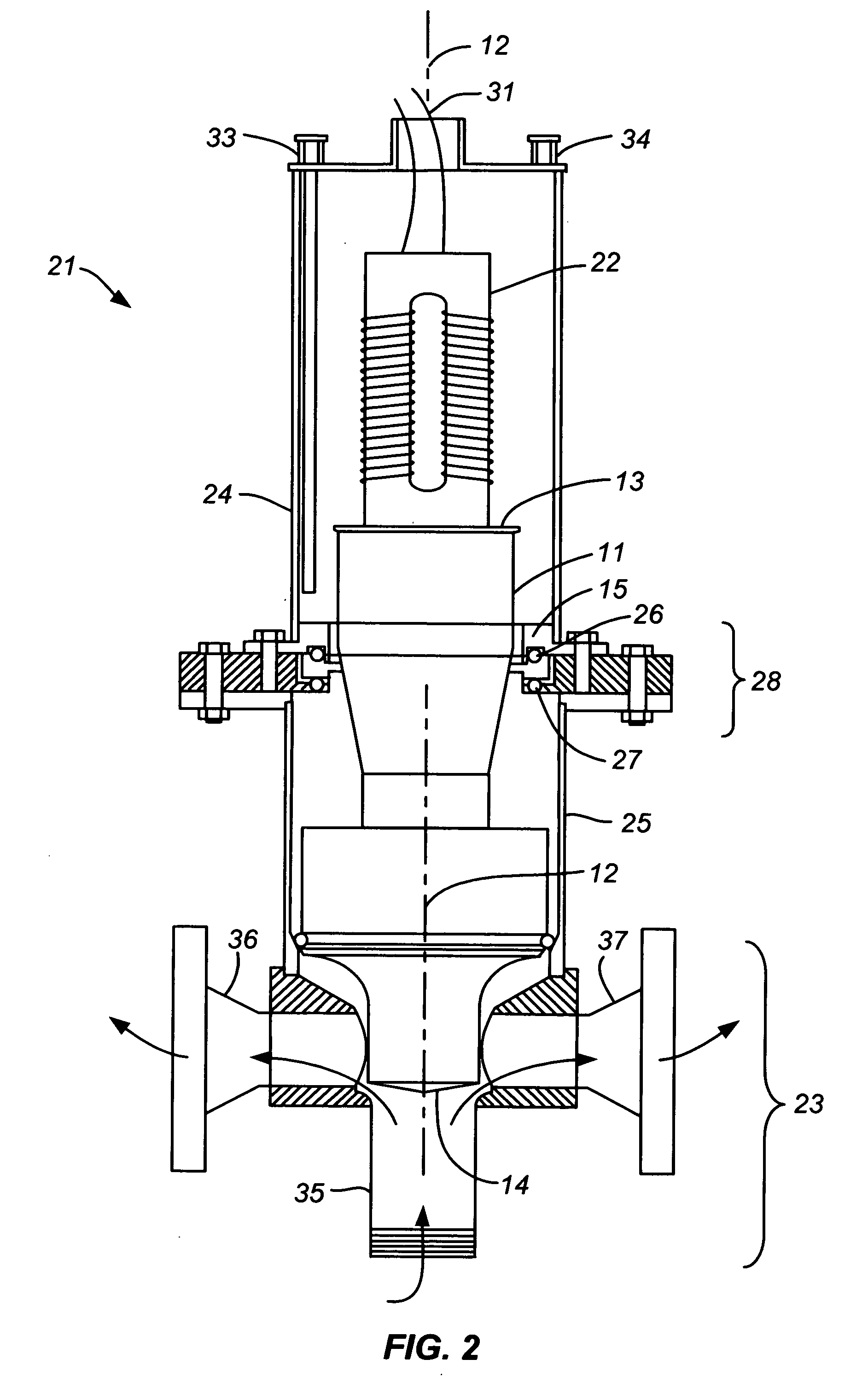High-power ultrasonic horn
a high-power, ultrasonic technology, applied in the direction of mechanical vibration separation, soldering apparatus, manufacturing tools, etc., can solve the problems of limited success in using ultrasound for large-scale chemical processes, limited frequency attainable by magnetostriction drives, and limited energy output of ultrasonic generators. achieve the effect of enhancing the penetration of ultrasonic vibrations and high vibration stress
- Summary
- Abstract
- Description
- Claims
- Application Information
AI Technical Summary
Benefits of technology
Problems solved by technology
Method used
Image
Examples
Embodiment Construction
[0012] As noted above, the length of the ultrasonic horn of this invention is optimally chosen with reference to the wavelength of the ultrasonic vibrations. Thus, once an ultrasonic frequency is selected, the corresponding wavelength of the vibrations in the material from which the horn is manufactured and hence the optimal longitudinal dimension of the horn can be determined. The frequencies known as ultrasonic frequencies are well known and will be readily apparent to those familiar with the use of ultrasound in any of its various applications. In general, ultrasonic vibrations have frequencies within the broad range of from about 15 kHz to about 100 kHz. For the purposes of this invention, a preferred range of ultrasonic frequencies is from about 15 kHz to about 30 kHz, and the most preferred is from about 15 kHz to about 20 kHz. Preferably, the length of the horn is such that the horn operates as a full wavelength resonator for vibrations in the ultrasonic range traveling longi...
PUM
| Property | Measurement | Unit |
|---|---|---|
| Length | aaaaa | aaaaa |
| Length | aaaaa | aaaaa |
| Fraction | aaaaa | aaaaa |
Abstract
Description
Claims
Application Information
 Login to View More
Login to View More - R&D
- Intellectual Property
- Life Sciences
- Materials
- Tech Scout
- Unparalleled Data Quality
- Higher Quality Content
- 60% Fewer Hallucinations
Browse by: Latest US Patents, China's latest patents, Technical Efficacy Thesaurus, Application Domain, Technology Topic, Popular Technical Reports.
© 2025 PatSnap. All rights reserved.Legal|Privacy policy|Modern Slavery Act Transparency Statement|Sitemap|About US| Contact US: help@patsnap.com



